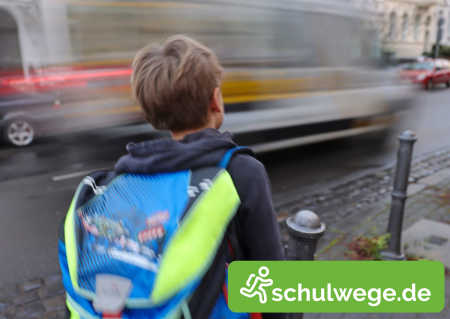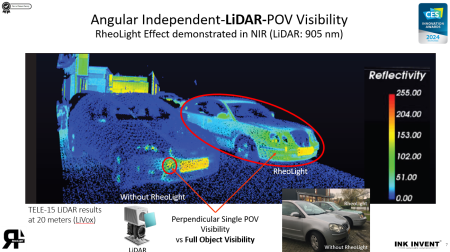Our members are dedicated to improving road safety and sharing their knowledge with the wider community. Here, you can explore our members' good practices – initiatives that have been assessed for their effectiveness in addressing a road safety problem and have proven results.
Get inspired – and sign up to share your good practices too!

Sunday, June 23, 2024
The Mobilidata program addresses the lack of centralized, timely and qualitative real time traffic warnings in the G2B2C ecosystem.
To fulfil the need of road users to receive and be able to cooperate with (return) real time traffic warnings, Mobilidata implemented for the entire Flanders- region and on the entire public road network the European defined C-ROADS standardized Cooperation model of C-ITS or Cooperative ITS. In Mobilidata 31 different use cases are addressed – see overview of all use cases under 7.2 -images
Mobilidata is the Flanders hub where real time road safety related information comes together from these sources:
• Governmental regional and local level: e.g. roadside infrastructure like traffic controllers, variable message signs,
• Private/corporate level: e.g. Directive 2010/40/EU, EU specified SRTI (safety related traffic information) - vehicle sensor based real time warnings.
• Road user ‘community’ based: Events reported, and event feedback generated by road users.
Each of these 3 source information systems has its strengths and weaknesses, offering a neutral environment where they can be combined and distributed to all interested in a non-commercial setting is possible in a road-safety promoting context.
Road safety information in Mobilidata can be clustered in 3 subgroups per topic in the 29 on-street use case list + an extra subgroup of 2 off-street policy related use cases:
• Road regulation & policies
• Warnings / dangerous situations
• Connected infrastructure / traffic lights
To fulfil the need of road users to receive and be able to cooperate with (return) real time traffic warnings, Mobilidata implemented for the entire Flanders- region and on the entire public road network the European defined C-ROADS standardized Cooperation model of C-ITS or Cooperative ITS. In Mobilidata 31 different use cases are addressed – see overview of all use cases under 7.2 -images
Mobilidata is the Flanders hub where real time road safety related information comes together from these sources:
• Governmental regional and local level: e.g. roadside infrastructure like traffic controllers, variable message signs,
• Private/corporate level: e.g. Directive 2010/40/EU, EU specified SRTI (safety related traffic information) - vehicle sensor based real time warnings.
• Road user ‘community’ based: Events reported, and event feedback generated by road users.
Each of these 3 source information systems has its strengths and weaknesses, offering a neutral environment where they can be combined and distributed to all interested in a non-commercial setting is possible in a road-safety promoting context.
Road safety information in Mobilidata can be clustered in 3 subgroups per topic in the 29 on-street use case list + an extra subgroup of 2 off-street policy related use cases:
• Road regulation & policies
• Warnings / dangerous situations
• Connected infrastructure / traffic lights

Sunday, June 23, 2024
The challenges we were addressing included:
1. An increase in road fatalities and serious injuries on Irish roads
2. A high number of fatalities in urban areas (between 2018 and 2022 27% of fatalities occurred on an urban road, while 53% of serious injuries occurred on an urban road?
3. Moderate public and political support for lower default speed limits in urban areas. 68% of adults said they would be in favour of them on one or more road., There was only three in situ at the campaign's inception.
Research shows the high risk of speed when a pedestrian or cyclist is hit at 50km/h they have a 50% chance of living or hit at 60kmh, and that chance drops to 10%.
Our challenge was to develop a 30k town campaign to raise awareness of the benefits of a lower default speed limit in urban areas in a bid to garner public support for the implementation of an increased number throughout the country and thus help lower road fatalities and serious injuries in urban areas.
The video shows safe interaction between a number of road users to raise awareness of how lowering the speed limit in urban areas can lead to safer, greener, more livable towns and communities.
1. An increase in road fatalities and serious injuries on Irish roads
2. A high number of fatalities in urban areas (between 2018 and 2022 27% of fatalities occurred on an urban road, while 53% of serious injuries occurred on an urban road?
3. Moderate public and political support for lower default speed limits in urban areas. 68% of adults said they would be in favour of them on one or more road., There was only three in situ at the campaign's inception.
Research shows the high risk of speed when a pedestrian or cyclist is hit at 50km/h they have a 50% chance of living or hit at 60kmh, and that chance drops to 10%.
Our challenge was to develop a 30k town campaign to raise awareness of the benefits of a lower default speed limit in urban areas in a bid to garner public support for the implementation of an increased number throughout the country and thus help lower road fatalities and serious injuries in urban areas.
The video shows safe interaction between a number of road users to raise awareness of how lowering the speed limit in urban areas can lead to safer, greener, more livable towns and communities.

Saturday, June 22, 2024
Governments and administration need to do more to improve road safety. But, the statistics for road traffic accidents are still shocking. Around 90% of all road accidents are caused by human error. That means every year, about a million people die because of other people's mistakes, carelessness, or irresponsibility. So it makes you wonder, are we doing good enough for road safety? Safe Driving, aims to help and informing whole road users about every single issue in Road Traffic from A to Z.

Friday, June 21, 2024
Gefährliche Verkehrssituationen sind auf vielen Schulwegen leider Alltag: Komplexe Kreuzungen oder Fahrzeuge, die Gehwege blockieren, stellen eine Gefahr für Kinder dar, die ihren Schulweg zu Fuß oder mit dem Rad meistern. Leider zeigt dies auch die aktuelle Statistik in Deutschland, nach der alle 20 Minuten ein Kind bei einem Verkehrsunfall verletzt oder getötet wird. Elterntaxis sind hier keine Lösung, sie schaffen andere Gefahren und erziehen Kinder zur Unselbständigkeit. Zur Förderung der eigenständigen Bewältigung des Schulwegs ist daher wichtig, den individuell sichersten Weg für das Kind herauszufinden und diesen mit ihm zu üben. Dabei spielt die Sensibilisierung vor konkreten Gefahrenstellen eine große Rolle. Als Informationsgrundlage sind hierfür Schulwegpläne vorgesehen, die als Teil der Verkehrserziehung von Schulen oder Kommunen erstellt werden. In Deutschland gibt es rd. 32.000 Schulen. Viele Schulen besitzen keinen Schulwegplan, der die Kinder sicher zur Schule navigiert, und existierende Pläne haben oft das Problem, dass sie statisch auf Papier oder nicht mehr auf dem aktuellen Stand sind. Zudem gehen einmal verteilte Schulwegepläne schnell im Familienalltag unter.

Friday, June 21, 2024
We are solving the two main unsettled topics in Camera and LiDAR Systems and human vision in traffic situations. The internally developed Visibility Label, featuring a new universally applicable reference color, addresses the first topic, which is the lack of a universal method for quantifying the visibility of complex shapes such as cars, bikes, and busses. Crystal Glass Pigments provide a solution for the second unresolved issue, focusing on improving the functionality (i.e. visibility) of coatings on vehicles. By formulating new colors with this innovative additive, the coatings become significantly better visible for camera systems, human vision at night, and LiDAR systems 24/7.